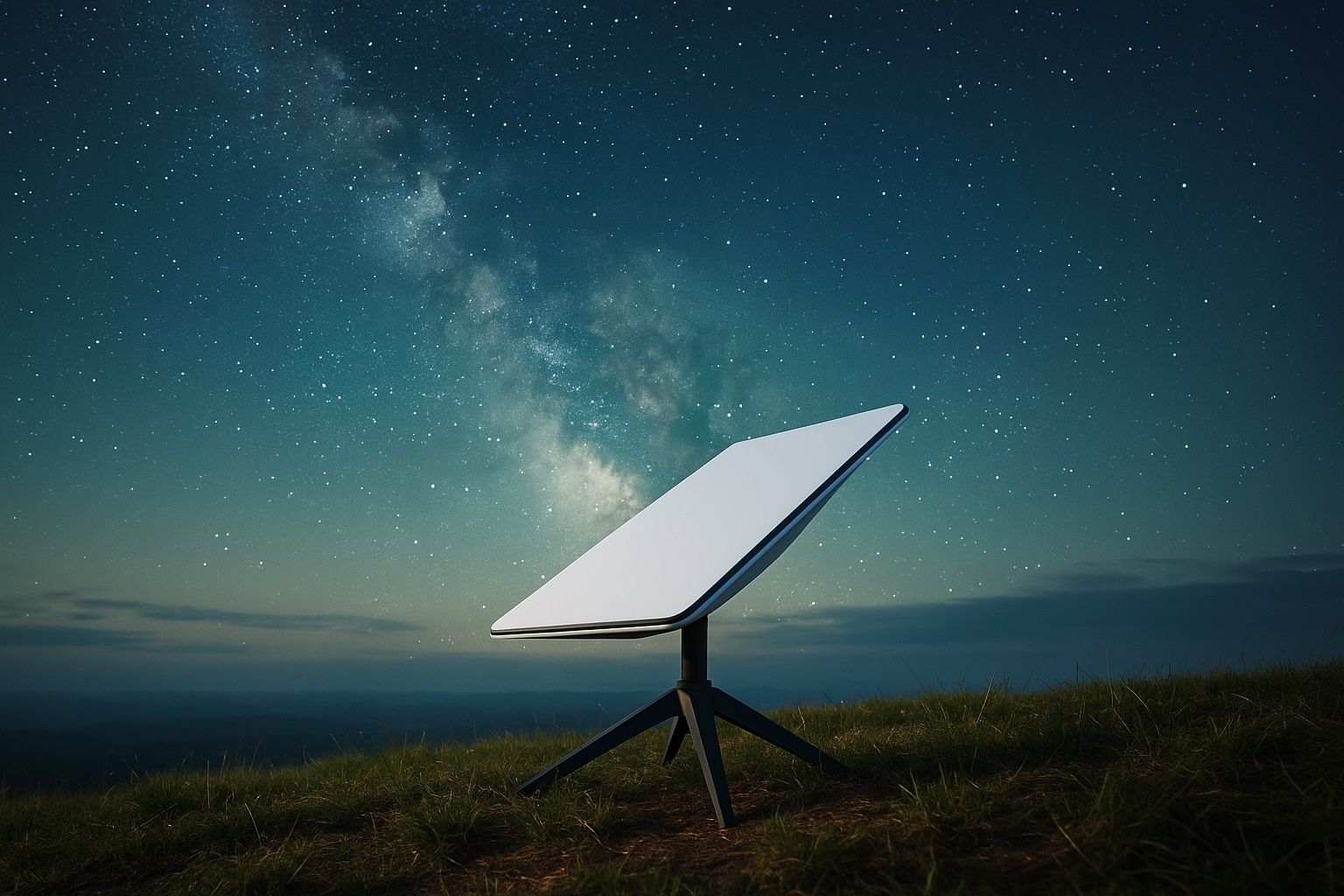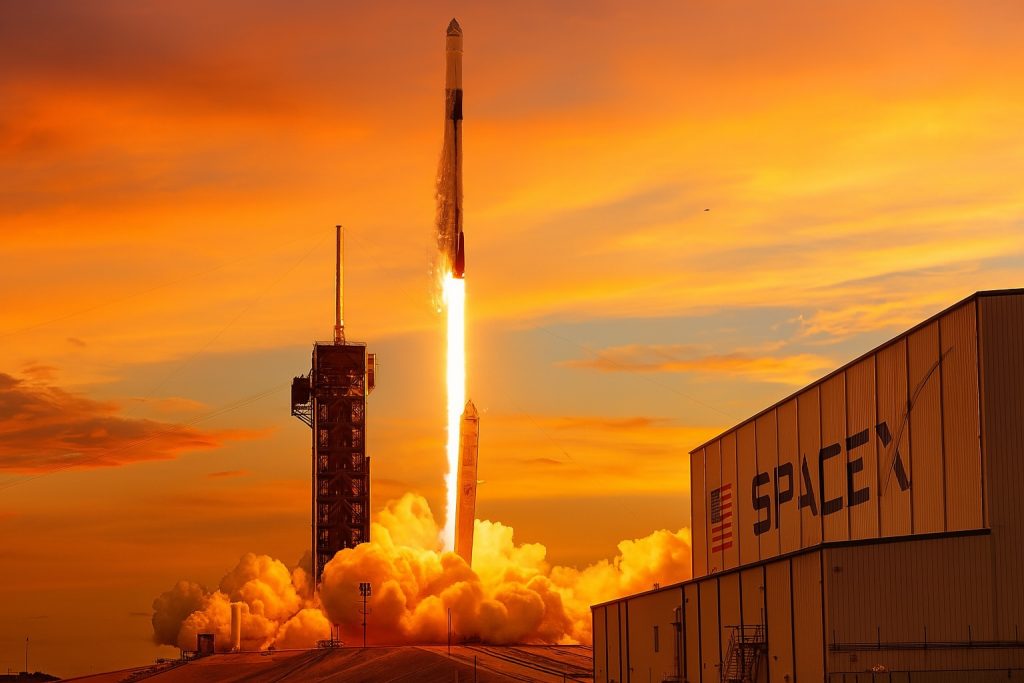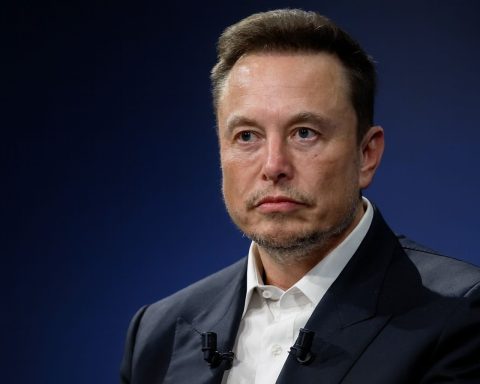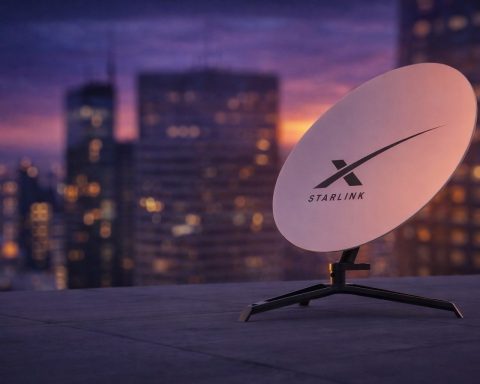Official SpaceX and Starlink Announcements (August 2025)
- Starship Test Update (Aug. 15): SpaceX published an official Starship Flight 9 & Ship 36 Report on Aug. 15, detailing the May 27 Starship test and outlining plans for the next launch. In it, SpaceX confirmed the ninth flight test had reached space but suffered an upper-stage pressurization failure, and announced a target of Aug. 24 for the tenth Starship flight from Starbase, Texas [1]. The update included fixes implemented after the last failure and highlighted that Flight 10 will carry Starship’s first payload deployment attempt (Starlink demo satellites) [2].
- Starlink in Kazakhstan (Aug. 13): Starlink officially launched service in Kazakhstan on Aug. 13, following a June agreement with the Kazakh government [3]. SpaceX’s local partner IEC Telecom will distribute Starlink’s high-speed internet across the country of 20 million, after successful pilot tests in remote schools. Tariffs will be announced by fall 2025 as Starlink integrates into Kazakhstan’s digital infrastructure [4].
- India Approval & Partnerships (Aug. 20): India’s government gave regulatory approval for Starlink to operate in the country, as announced on Aug. 20. An official statement outlined that Starlink will use India’s Aadhaar ID system for customer verification to meet KYC requirements [5]. SpaceX has also partnered with telecom giants Bharti Airtel and Reliance Jio to roll out Starlink services in India, paving the way to connect up to 2 million Indian users with satellite broadband [6].
- NASA Resupply Mission Set (Aug. 18): NASA confirmed that SpaceX’s 33rd Commercial Resupply Services mission (CRS-33) to the ISS is scheduled for Aug. 24. A Falcon 9 with a Dragon capsule will launch from Florida carrying over 5,000 pounds of supplies and experiments, slated to dock on Aug. 25 [7] [8]. Notably, Dragon will test a new station reboost capability during this mission, using a trunk-mounted kit to adjust the ISS orbit [9].
Launch and Mission Highlights
- Starlink Launch Frenzy: SpaceX maintained a blistering launch pace in August, dedicating several Falcon 9 missions to its Starlink constellation. On Aug. 14, a Falcon 9 from Cape Canaveral lofted 28 Starlink V2 Mini satellites into orbit [10]. Just hours later, in the early hours of Aug. 18 UTC, another Falcon 9 from Vandenberg, California carried 24 Starlink satellites – notably SpaceX’s 100th Falcon 9 launch of 2025 [11]. By mid-August, SpaceX had flown 72 Starlink missions in 2025 [12], deploying well over 1,700 satellites this year alone. These launches brought the active Starlink network to 8,100+ satellites in orbit, out of 9,400+ launched since 2018 [13], dramatically expanding global coverage for Starlink users.
- Record-Breaking Cadence: Hitting 100 orbital launches by August is a milestone unprecedented in the industry. “Falcon Launch #100 of 2025… we hit 100 on Oct. 20 in 2024,” noted SpaceX VP Kiko Dontchev, underscoring the accelerated launch rate [14]. Reusability achievements piled up in tandem – on Aug. 18 booster B1088 completed its 9th flight and landed on “Of Course I Still Love You”, pushing SpaceX to 489 booster landings to date [15] [16]. SpaceX is seeking regulatory approval to further ramp capacity: it has plans on the table to nearly double launches from Vandenberg (up to 95 per year) and activate a second West Coast pad with new landing zones [17] [18].
- Other Missions & Projects: Beyond Starlink, SpaceX’s manifest in August featured a high-profile military mission. The company prepared to launch the U.S. Space Force’s secretive X-37B spaceplane on a Falcon 9 from Kennedy Space Center, with live coverage beginning Aug. 20 [19]. (The uncrewed X-37B, which resembles a mini-shuttle, will test advanced technologies in orbit before autonomously landing.) Meanwhile, SpaceX’s workhorse Falcon 9 continued supporting various customers – for example, an Aug. 31 launch carried a batch of OneWeb internet satellites under a rideshare arrangement (further cementing SpaceX as a go-to launcher for other constellations). And in a nod to international partnership, SpaceX’s rideshare program delivered payloads for over 20 countries this month, from weather sats to university cubesats, making space more accessible globally (as reported in SpaceX’s launch logs).
Starship Program: Progress and Setbacks
- Flight 9 Postmortem: SpaceX’s Aug. 15 update shed light on why Starship Flight 9 fell short of full success. The May 27 test flight did achieve a clean stage separation and ignited Starship’s six engines for a time [20], but about 5 minutes into that upper-stage burn things went awry. SpaceX revealed that a fuel tank pressurization diffuser in Ship 35’s nosecone failed, causing methane gas to leak and build pressure in the nose [21]. Starship managed to hit its velocity target and cut off engines (SECO), but the anomalous methane buildup upset the vehicle’s attitude and even prevented the payload bay doors from opening for satellite deployment [22]. Forty seconds later, with liquid methane visibly floating in the bay [23], on-board software triggered an automatic flight termination (passivation) for safety [24]. The vehicle tumbled out of control and disintegrated upon reentry – albeit within the designated ocean debris zone [25]. Crucially, SpaceX noted Starship’s autonomous flight safety system did not have to self-destruct the rocket; it remained intact until atmospheric breakup [26].
- Next Launch on Deck: Undeterred, SpaceX moved forward with plans for Starship Flight 10. On Aug. 16, the company confirmed it is “gearing up” for a launch as soon as Sunday, Aug. 24 from Starbase [27], pending final regulatory clearance. This flight will pair Booster 16 with Ship 37 – a new ship built to replace the one lost in June. SpaceX says Flight 10 aims to expand Super Heavy’s flight envelope (including several test landing burns for the booster) and repeat past objectives, such as attempting Starship’s first in-space relight and payload release [28]. The payload, intriguingly, is a set of eight Starlink prototype satellites (“Starlink simulators”) meant to mimic the mass and form factor of SpaceX’s next-gen satellites [29]. If all goes well, Starship could deploy these during the mission – a capability it failed to demonstrate on the last three tries. The test will also try multiple reentry profiles for the ship to gather data toward eventually returning Starship to land for a future catch attempt [30]. SpaceX has an hour-long launch window on Aug. 24 (opening ~6:30 p.m. local Texas time) reserved with the FAA [31].
- Fixes and Upgrades: In response to Flight 9’s issues, SpaceX engineers implemented hardware changes and new practices. The faulty fuel tank diffuser suspected in Ship 35’s failure has been redesigned and rigorously tested on the ground [32]. SpaceX indicated that pre-flight analysis hadn’t predicted the diffuser problem, but after seeing Flight 9’s data, they were able to replicate the failure mode in lab tests and validate the fix [33]. Additionally, SpaceX addressed a separate June setback: on June 18, the next Starship prototype (Ship 36) violently exploded on the test stand during a propellant loading test, destroying the vehicle [34]. Post-mortem analysis found an “undetectable” flaw in a composite-overwrapped pressure vessel in the ship’s nose; when the COPV ruptured below its rated pressure, it caused a structural collapse and fireball [35]. To bolster safety, SpaceX has now reduced COPV pressures, added extra inspections and proof tests, and even developed a new non-destructive inspection method to catch internal damage [36]. They’re also fitting COPVs with protective external covers that provide a visible indicator if something’s amiss [37]. With Ship 36 gone and the primary test stand at Massey’s site heavily damaged, SpaceX improvised by using the Starbase orbital pad itself for static fires: Ship 37 successfully fired one engine on Aug. 1 and all six engines on Aug. 3 at the launch mount [38]. These tweaks and tests aim to ensure Ship 37 makes it through fueling and ignition without a repeat of June’s calamity.
- FAA Green Light: A major bureaucratic hurdle was cleared on Aug. 15 when the FAA closed its investigation into the Flight 9 mishap [39]. This sign-off indicates the agency is satisfied with SpaceX’s corrective actions and clears the path for issuing a launch license for Flight 10. SpaceX noted that Flight 9 stayed within its approved trajectory and safety parameters — there were no violations of flight safety rules and no need for the range to trigger the flight termination system during the test [40]. With the investigation over, SpaceX can implement its fixes and move forward. Still, the string of Starship test failures (Flights 7, 8, and 9 all ended with second-stage malfunctions) has cascading effects. NASA officials disclosed that a critical Starship demonstration for Artemis – an orbital propellant transfer test originally hoped for by mid-2025 – is now pushed to FY 2026 [41]. SpaceX founder Elon Musk has said a more advanced “Starship Version 3” will be ready by the end of the year to meet NASA’s needs [42], but given past schedule slips, many experts remain in “wait and see” mode. For now, all eyes are on Flight 10 to break the streak and achieve a fully successful Starship mission.
Technical Advancements and New Developments
- Super Heavy Booster Upgrades: SpaceX revealed a redesigned grid fin system for its Super Heavy boosters, aiming to improve control on descent. In mid-August, the company shared images of newly fabricated grid fins that are 50% larger and stronger than the previous design [43]. Uniquely, the Super Heavy will now sport three grid fins instead of four – an unconventional configuration made possible by the fins’ increased size and capability [44]. “The redesigned grid fins…enable the booster to descend at higher angles of attack,” SpaceX explained, meaning the returning rocket can come in more steeply while still steering effectively [45]. These massive, lattice-like flaps (likened to metal bird wings) help orient and slow the booster during atmospheric reentry. By moving to a three-fin setup, SpaceX reduces weight and drag points, while the larger fin surface provides even more aerodynamic control authority. The first Super Heavy with the new grid fins (likely Booster 9 or B10 in testing) will demonstrate whether this innovation leads to smoother landings – a crucial step as SpaceX works toward eventually catching boosters on the launch tower.
- Learning from Flight Tests: Every Starship test offers data for iterative improvement. In Flight 9, Booster 14 became the first Super Heavy to fly a second time (reusing 29 of its 33 Raptors from a prior mission) [46]. It also performed a never-before-tried guided “flip” maneuver after stage separation, which oriented the booster for a targeted descent rather than letting it tumble randomly [47]. SpaceX reported this controlled flip saved reserve fuel, increasing payload capacity by requiring less propellant for course corrections [48]. However, Flight 9’s booster test also exposed a new weak point: when B14 ignited engines for landing, only 12 of 13 planned engines lit, and moments later an explosion in the aft end cut telemetry [49]. The booster was about 1 km above the Gulf and seconds from touchdown when it blew apart [50]. SpaceX’s analysis pinned the cause on higher-than-predicted forces during reentry — the booster’s aggressive angle of attack overstressed a fuel transfer tube, leading it to rupture and mix propellants, triggering an explosion [51]. In response, for upcoming flights using this Block 1 booster design, SpaceX will dial back the reentry angle to reduce aerodynamic loads on the structure [52]. For Flight 10’s booster (B16), SpaceX plans an experimental landing profile: it will attempt to light an outer-ring Raptor engine (not just the central ones) during the final landing burn to see if a “middle ring” engine can serve as a backup for landing [53]. B16 will then transition to only two center engines and hover briefly above the water before dropping into the ocean [54]. These incremental tests – engine reuse, flips, varying engine ignition sequences – are helping SpaceX gather the data to eventually nail a full booster landing. No catch attempt is planned yet, but each tweak brings them closer to that goal.
- Satellite-to-Cell Breakthrough: A major technical milestone was achieved in August with Starlink’s nascent Direct-to-Cell service. On Aug. 12, Ukraine’s largest mobile operator Kyivstar announced it had successfully sent SMS text messages via Starlink satellites, using ordinary cell phones on the ground [55]. The field test, conducted in rural Ukraine with Starlink’s experimental “cell tower in space” payloads, allowed Kyivstar’s CEO and Ukraine’s digital minister to exchange messages in real-time, even with terrestrial cell networks shut off [56]. This proof-of-concept demonstrates Starlink’s ability to fill dead zones by linking unmodified phones directly to satellites orbiting ~500 km overhead. The Starlink satellites for direct-to-cell are equipped with special cellular baseband hardware that can communicate on standard mobile frequencies [57]. SpaceX has quietly inked direct-to-cell deals in ~10 countries so far, and Kyivstar is poised to be the first in Europe to offer it commercially [58]. The initial service – limited to text messaging – is expected to roll out by Q4 2025 for Kyivstar subscribers, free during the beta phase [59] [60]. Voice and broadband data via satellite will follow in 2026 once more advanced satellites are launched [61]. The implications are huge: in disaster zones or remote regions, anyone with a normal phone could stay connected via satellite. For war-torn Ukraine, this technology is particularly vital as Russian attacks often knock out infrastructure. Starlink’s direct-to-cell test underscores SpaceX’s step into telecom services traditionally dominated by terrestrial providers, foreshadowing a new era of ubiquitous connectivity from space.
Regulatory and Legal Developments
- India Opens Up: After years of anticipation, SpaceX finally got the green light to enter the Indian broadband market. In August, India’s Department of Telecommunications approved Starlink’s internet service, a significant regulatory win in a nation of 1.4 billion people. The approval comes with compliance strings: Starlink must verify customers through the country’s Aadhaar ID system (a biometric national ID) and adhere to security requirements [62]. Starlink’s local subsidiary has already partnered with Indian telecom operators Airtel and Jio to distribute the service on the ground [63], ensuring smoother last-mile delivery and leveraging existing market reach. Government officials indicated Starlink could initially connect ~2 million Indian users, focusing on rural and remote regions where terrestrial broadband is lacking [64]. Industry watchers note that India previously barred Starlink from taking preorders until licensing was sorted, so this approval flips the script – now SpaceX can formally market in India, likely making it one of Starlink’s largest user bases in the coming years.
- Central Asia Expansion: SpaceX’s Starlink continues its push into new geographies. On Aug. 13, Starlink went live in Kazakhstan, marking its first service in Central Asia [65]. This follows negotiations with Kazakhstan’s government, which in June agreed to allow Starlink’s entry as part of a national digitalization drive [66]. The launch involved close coordination with IEC Telecom, a long-standing satellite communications provider in the region, now appointed as an official Starlink distributor [67]. With Kazakhstan’s vast rural expanses and patchy internet infrastructure, Starlink is expected to connect remote schools, businesses, and even maritime users on the Caspian Sea. Pricing and packages tailored for Kazakhstan will be rolled out by fall 2025 [68], once initial distribution networks are in place. The Kazakh president has publicly championed satellite internet as a means to bridge the digital divide in his country, so politically the Starlink arrival has been welcomed. This successful entry could pave the way for neighboring countries – reports suggest Kyrgyzstan and Uzbekistan are in talks and could see Starlink service by 2025-26 [69] [70].
- Managing Starlink’s Spread: Not every country is fully embracing Starlink without reservations. A commentary from the Stimson Center (Aug. 5) observed that Gulf states in the Middle East have adopted a cautious stance: they “welcome Starlink but limit its reach.” Highly connected nations like the UAE, Saudi Arabia, and others see value in Starlink for specific uses (e.g. Emirates Airline equipping planes with Starlink Wi-Fi, or Saudi Arabia approving it for ships and planes) [71] [72], yet they haven’t permitted widespread retail availability. Concerns over digital sovereignty and regulatory control loom large. These governments typically tightly regulate internet gateways, and Starlink’s global, bypass-the-ground architecture challenges that model. For instance, Oman and Bahrain moved quickly to license Starlink in early 2025 for general customers [73] [74], whereas the UAE still disallows direct sales of Starlink kits, instead leveraging the tech for government and maritime projects [75]. Saudi Arabia only authorized Starlink for enterprise (oil rigs, airlines, etc.) so far [76]. This patchwork of policies shows how Starlink’s expansion is sometimes outpacing regulatory comfort. Some countries insist on local partnering (or even hosting ground gateways on their soil) to keep a degree of oversight. SpaceX, for its part, has shown flexibility – partnering with Elon Musk’s own sister company xAI for data center talks in Saudi, for example, and working with Dubai’s Elcome marine tech firm to serve UAE yachts [77]. As Starlink’s footprint grows, navigating local laws and political sensitivities has become as important as solving technical challenges.
- Environmental and Legal Scrutiny: SpaceX’s Starship program, with its disruptive launches and occasional explosions, continues to draw legal challenges. Over the summer, Mexico’s president Claudia Sheinbaum voiced alarm about the June 18 Starship explosion that rocked SpaceX’s Boca Chica site near the Texas-Mexico border. By late June she threatened to sue SpaceX for environmental “contamination,” claiming debris or emissions from the Starbase incident impacted Mexican territory [78] [79]. Sheinbaum said her government was reviewing international law and would pursue “necessary lawsuits” [80], a rare case of a nation considering legal action over a private space launch. It’s unclear what jurisdiction Mexico would file in, but the comments underscore cross-border concerns – the Starbase launch site is just a few miles from Mexican towns. SpaceX responded that no hazardous materials were detected off-site and that it communicates closely with U.S. agencies after anomalies [81]. In the U.S., the FAA faces its own lawsuit: a coalition of environmental groups (led by the Center for Biological Diversity) is suing the FAA for allowing Starship launches without a full environmental impact statement, after the April 2023 maiden launch scattered debris over a wildlife refuge [82]. That case is ongoing in federal court, with SpaceX recently granted permission to formally intervene in defense of its launch license [83] [84]. Separately, a Texas state environmental panel had cited SpaceX for Clean Water Act violations in 2024 (related to rocket particulate runoff) [85], though SpaceX disputed those findings. All this legal friction implies that even as SpaceX pushes forward technologically, it will need to invest in environmental mitigation and community outreach to avoid prolonged court battles that could delay Starship’s progress.
Market and Investment News
- Sky-High Valuation Talks: SpaceX’s financial might is growing as fast as its rocket launches. In July and into August 2025, reports from multiple outlets suggested SpaceX was in advanced talks with investors to raise yet another round of capital at an eye-watering $400 billion valuation [86]. If finalized, that would make SpaceX one of the most valuable private companies ever. The rumored deal structure includes both new equity and a secondary share sale (allowing existing shareholders to cash out some shares) [87] [88]. Such hybrid rounds have become common for late-stage “unicorns” to provide liquidity without an IPO. A $400 billion valuation represents a steep climb – for context, SpaceX was valued around $150 billion in early 2023 after secondary sales. The justification investors cite is SpaceX’s dominance in launch (with a near-monopoly on affordable heavy lift) and the surging revenues of Starlink. Indeed, SpaceX’s ability to launch 100+ missions per year routinely [89] and its ever-improving reusability (saving costs) give it an edge over competitors. The company also holds lucrative long-term contracts (NASA crew and cargo missions, U.S. defense launches, etc.) that provide guaranteed cash flow [90]. Insiders say this fundraising is partly to bankroll Starship development – an expensive endeavor with a huge payoff if successful [91]. Pouring more capital now will help build out Starship factories, launch infrastructure, and ground systems to meet NASA’s Moon landing schedule. SpaceX hasn’t publicly commented on the funding talks, but rumor has it the round is oversubscribed with big-name institutional investors eager to get a slice of SpaceX’s future.
- Starlink IPO Rumors: With SpaceX’s valuation so high, many market observers are speculating if and when Starlink might be spun off as a publicly traded company. Elon Musk himself has floated the idea over the years – he told SpaceX staff in 2022 that an IPO for Starlink could happen once “the business is smooth and predictable,” hinting at 2025 or later as a timeline [92]. Now that it’s 2025, conditions seem closer to that benchmark: Starlink’s subscriber base and revenue have grown massively (with the service reportedly profitable and generating billions annually) [93] [94]. In August, Motley Fool analysts noted that Starlink likely constitutes the majority of SpaceX’s revenue and could be valued anywhere from $30 billion to $100 billion as a standalone entity [95]. Veteran investor Ron Baron even speculated Starlink could IPO at $250–300 billion a couple years from now [96]. However, Elon Musk has poured cold water on the near-term IPO idea in recent comments. He pointed out that SpaceX has no trouble raising private funding and that Starlink’s cash flow is fueling Starship development – implying there’s no need to spin it off right now [97] [98]. In an August interview, Musk said “possible that Starlink may go public at some point”, but emphasized he’s not rushing and will do so only when it makes strategic sense [99]. So, while the dream of a Starlink stock excites Wall Street (many would love to invest in SpaceX’s growth), the consensus is 2025 is premature. SpaceX likely prefers to keep Starlink under its wing until after the expensive Starship project is further along – using Starlink’s steady revenue to fund rockets, rather than handing that cash flow to public shareholders just yet.
- Revenue Rockets and Subscriber Stats: SpaceX’s financial footing is bolstered by Starlink’s rapid growth. The Starlink Network Update published in July 2025 revealed that over the past year Starlink expanded to 42 new countries and added 2.7 million+ active customers, reaching “more than 6 million” users globally [100]. This is a dramatic jump from roughly 1 million users in 2022 and shows the network effects of Starlink’s availability in now 60+ countries. With new markets like India and Central Asia coming online, subscriber numbers are poised to climb even higher. On the revenue side, industry analysts project Starlink will hit about $12.3 billion in revenue in 2025 [101] – a staggering figure for a business that effectively didn’t exist five years ago. Much of this comes from subscription fees (typically ~$80–120/month in many countries), which means recurring revenue. For SpaceX, this is a game-changer: unlike launch revenue that is one-off per contract, Starlink brings in a continuous stream of cash that grows with each new user. This high-margin subscription model is “quietly becoming [SpaceX’s] financial engine,” one report noted [102]. Even after accounting for satellite deployment and ground infrastructure costs, Starlink’s contribution likely makes SpaceX cash-flow positive, freeing it from constant fundraising. Little wonder investors are excited – a space company with a strong consumer revenue arm is almost unheard of. The big question is how Starlink’s growth will hold up as competitors emerge (Amazon’s Project Kuiper is set for test launches). But in August 2025, SpaceX enjoys a massive first-mover advantage, and each successful launch and satisfied customer raises the moat for any would-be rival.
Expert Analysis and Commentary
- Global Impact and Oversight: Policy experts are increasingly weighing in on SpaceX’s growing influence. Writing for the Stimson Center on Aug. 5, analyst Leonardo Mazzucco pointed out that Starlink’s global coverage brings both opportunity and anxiety for governments. On one hand, Starlink can connect remote areas and provide backup internet in case of fiber-optic outages – a strategic asset recognized by many countries. On the other, its ubiquity poses a challenge to national sovereignty over digital infrastructure. “While Starlink promises global coverage and rapid connectivity, it also raises concerns about digital national sovereignty, competitiveness, and regulatory oversight,” Mazzucco noted [103]. His commentary highlights how Gulf states allowed Starlink in limited ways to maintain control (as discussed above). Similarly, European regulators have started drafting rules for megaconstellations to ensure they don’t undercut local telecom markets or create space debris risks. SpaceX’s activities in August – from tests in Ukraine to service launches in Asia – underscore that Starlink is not just a commercial venture but a geopolitical actor in its own right. Expect more debates in the UN and ITU about how to govern tens of thousands of private satellites beaming internet across borders [104].
- Balancing Boldness with Execution: SpaceX’s August saga illustrated the company’s hallmark approach: move fast and break things (sometimes literally). The Starship program’s stumbles have drawn criticism from some corners – for instance, environmental groups decrying the debris and delayed mitigation efforts. SpaceX’s response has been a mixture of transparency and tenacity. The company openly published detailed failure analyses (e.g., explaining the diffuser issue) and implemented fixes, demonstrating an engineer-driven culture of learning from mistakes [105] [106]. This candidness about failures is something rarely seen in the traditionally cautious aerospace industry. SpaceX leadership maintains that pushing the envelope is the only way to eventually achieve radical goals like Mars colonization. However, even SpaceX’s biggest supporters acknowledge that Starship’s delays are mounting. As Spaceflight Now noted, “SpaceX has repeatedly failed to hit milestones for the Starship program” and schedule pressure is rising from commitments like NASA’s Artemis moon landing [107]. The coming months will test SpaceX’s ability to apply the hard lessons from Flight 9 and stick a Starship landing. On the flip side, SpaceX’s operational side – the Falcon/Starlink launch machine – is drawing praise for its efficiency. Launch industry analysts in August marveled at how routine SpaceX made orbital launches appear, hitting 100 launches in a year far faster than any nation or company ever has [108]. The fact that SpaceX can simultaneously prep Starship for flight while launching rockets weekly is “mind-boggling,” one industry veteran commented. Yet, as SpaceX stretches itself, some warn against complacency: the more one launches, the more one must guard against process drift and ensure safety with each reuse. SpaceX’s cadence will face a new kind of strain when Starship enters service – integrating that ultra-heavy launch system into regular operations could be a whole new challenge.
- The Road Ahead: August 2025 might be remembered as a turning point for SpaceX – the month it proved it could sustain an unprecedented launch tempo, and the month it (hopefully) conquered a few of Starship’s dragons. Elon Musk has often said that rapid iteration is key to SpaceX’s success: test, fail, fix, test again. We saw that in action with Starship, where within 3 months of a failure SpaceX is ready to fly the next prototype with improvements. Space industry experts note this contrasts with more conservative programs (which might take a year or more to investigate a failure). However, regulatory patience is not unlimited. The FAA will be watching Flight 10 closely; another catastrophic failure could lead to longer grounding. In the commercial arena, SpaceX’s dominance is forcing others to react. United Launch Alliance (ULA) and Arianespace, for example, used August’s annual Small Satellite Conference to pitch their upcoming rockets, but many satellite operators are simply opting for Falcon 9 rideshares due to availability. “It’s SpaceX’s world, and everyone else is just living in it,” joked one satellite executive. That said, competition is on the horizon: Amazon’s Project Kuiper aims to launch test satellites soon (possibly using ULA’s Vulcan by year-end), and Blue Origin’s New Glenn may debut in 2025. SpaceX will have to keep innovating to stay ahead. As September dawns, SpaceX aficionados and critics alike are eagerly awaiting two things: a picture-perfect Starship launch and orbit (to silence the doubters), and signs that Starlink can maintain quality as it scales (to silence the telecom skeptics). If August was any indication, SpaceX will continue to command headlines with its mix of spectacular feats and formidable challenges – writing the next chapter of NewSpace history one launch at a time.
References
1. spaceflightnow.com, 2. spaceflightnow.com, 3. www.satellitetoday.com, 4. www.satellitetoday.com, 5. timesofindia.indiatimes.com, 6. timesofindia.indiatimes.com, 7. www.nasa.gov, 8. www.nasa.gov, 9. www.nasa.gov, 10. spaceflightnow.com, 11. www.space.com, 12. spaceflightnow.com, 13. www.space.com, 14. spaceflightnow.com, 15. spaceflightnow.com, 16. www.space.com, 17. spaceflightnow.com, 18. spaceflightnow.com, 19. spaceflightnow.com, 20. spaceflightnow.com, 21. spaceflightnow.com, 22. spaceflightnow.com, 23. spaceflightnow.com, 24. spaceflightnow.com, 25. en.wikipedia.org, 26. spaceflightnow.com, 27. spaceflightnow.com, 28. spaceflightnow.com, 29. spaceflightnow.com, 30. spaceflightnow.com, 31. spaceflightnow.com, 32. spaceflightnow.com, 33. spaceflightnow.com, 34. spaceflightnow.com, 35. spaceflightnow.com, 36. spaceflightnow.com, 37. spaceflightnow.com, 38. spaceflightnow.com, 39. en.wikipedia.org, 40. spaceflightnow.com, 41. spaceflightnow.com, 42. spaceflightnow.com, 43. www.space.com, 44. www.space.com, 45. www.space.com, 46. spaceflightnow.com, 47. spaceflightnow.com, 48. spaceflightnow.com, 49. spaceflightnow.com, 50. spaceflightnow.com, 51. spaceflightnow.com, 52. spaceflightnow.com, 53. spaceflightnow.com, 54. spaceflightnow.com, 55. www.reuters.com, 56. www.reuters.com, 57. www.reuters.com, 58. www.reuters.com, 59. kyivindependent.com, 60. www.reuters.com, 61. www.reuters.com, 62. timesofindia.indiatimes.com, 63. timesofindia.indiatimes.com, 64. timesofindia.indiatimes.com, 65. www.satellitetoday.com, 66. www.satellitetoday.com, 67. www.satellitetoday.com, 68. www.satellitetoday.com, 69. timesca.com, 70. caspianpost.com, 71. www.stimson.org, 72. www.stimson.org, 73. www.stimson.org, 74. www.stimson.org, 75. www.stimson.org, 76. www.stimson.org, 77. www.stimson.org, 78. www.space.com, 79. www.space.com, 80. www.space.com, 81. www.space.com, 82. www.space.com, 83. www.reuters.com, 84. www.reuters.com, 85. www.space.com, 86. techfundingnews.com, 87. techfundingnews.com, 88. techfundingnews.com, 89. www.space.com, 90. techfundingnews.com, 91. techfundingnews.com, 92. www.nasdaq.com, 93. www.nasdaq.com, 94. www.nasdaq.com, 95. www.nasdaq.com, 96. www.nasdaq.com, 97. www.nasdaq.com, 98. www.nasdaq.com, 99. www.nasdaq.com, 100. www.starlink.com, 101. www.nasdaq.com, 102. techfundingnews.com, 103. www.stimson.org, 104. www.stimson.org, 105. spaceflightnow.com, 106. spaceflightnow.com, 107. spaceflightnow.com, 108. spaceflightnow.com










